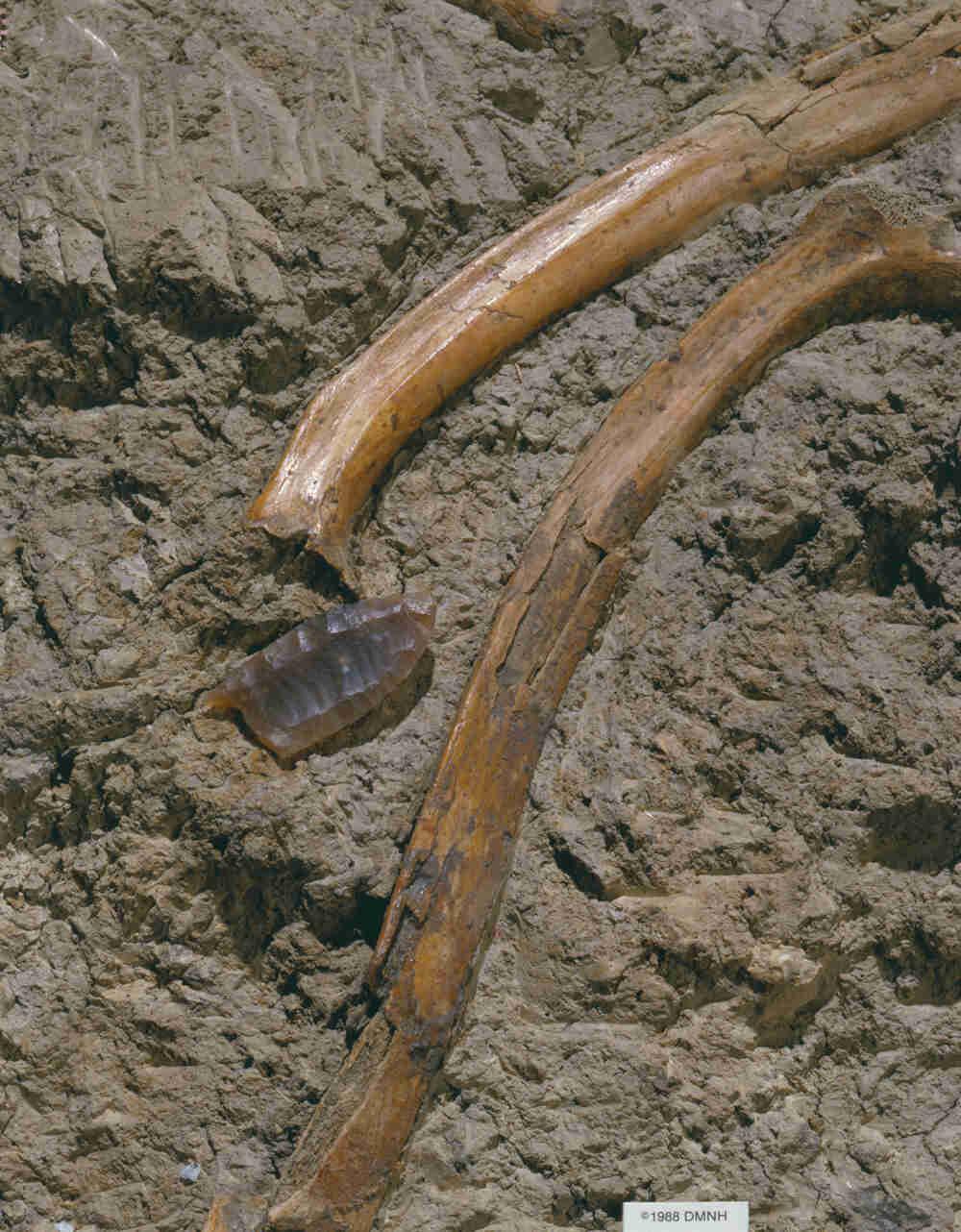Folsom People
Full Article
Folsom groups, also called Folsom peoples or Folsom culture, occupied all of Colorado between about 13,000 and 12,000 years ago. They were not the first people in these areas, although they might have been the first in some newly unglaciated portions of the high Rockies. Nevertheless, Folsom peoples were widespread throughout Colorado and beyond, and in some places they were apparently quite numerous.
Discovery
The Folsom culture was first discovered near Folsom, New Mexico, in 1926, just over Colorado’s southern border. The discovery is a fascinating story of a former slave, a self-educated naturalist, and his quest for knowledge. The Denver Museum of Natural History (now Denver Museum of Nature and Science) played a significant role in the Folsom investigations and still holds the first documented association of humans and Pleistocene fauna in its collections, which are usually on display. The investigation marks a major change in the understanding of American prehistory: the realization that the ancestors of Native Americans have been on the continent since the Pleistocene (Ice Ages).
The discovery of other Folsom sites followed throughout Colorado, but with the exception of the Lindenmeier site in Larimer County, few finds were accompanied by major excavations. Notable investigations at several places in the San Luis Valley expanded the geographic range of Folsom groups into the mountains, but the sites remained underinvestigated until the later part of the twentieth century, when their true value was realized. A major expansion of the Folsom database in Colorado occurred at the end of the twentieth century and the first decade of the twenty-first. This showed the extensive use of the Rocky Mountains by one of the earliest inhabitants of North America. On the continental scale these studies changed perceptions of Folsom people from plains bison hunters to perhaps much more broad-based foragers—people who subsisted on a wide variety of plants and animals—occupying various niches of the continent.
Points
Folsom sites are identified by Folsom projectile points, which include the following:
Projectile point preforms. This is a stage in the manufacturing sequence of most projectile points.
Channel flakes or flutes. A flute is the groove created when a thin piece of stone is removed from the point longitudinally; the thin piece is the channel flake.
Ultrathin bifaces. A biface is a chipped stone tool worked on both faces; when that work involves thinning the center of the face more than the edges, the biface is termed an ultrathin.
The manufacturing of Folsom projectile points has fascinated archaeologists, the public, and flint knappers—replicators of ancient stone tool technologies—since the earliest days of their discovery.
The finished Folsom projectile point is characterized by two longitudinal flakes (flutes) removed from each face of the point, followed by finishing flakes between the point edge and the flute ridge. Both the flutes and in many instances the finishing flakes constitute much of the fascination—the flutes because they often result in breakage of the point and cause high failure rates, and the finishing flaking because it is occasionally so fine and regular that it appears to be machine-made.
Of course, machines did not exist until recently, so how did Folsom people perform such craftsmanship? This has yet to be answered. Folsom ultrathin bifaces or knives are also distinct in that the manufacturing process results in extremely thin forms that archaeologists argue were specialized tools for preparing dry meat.
Mountain People
The fascinating new data from the Colorado high country suggest that the Rocky Mountains may have had an especially heavy human occupation during Folsom times. Site density estimates for Middle Park are comparable to or even higher than other high-density Folsom sites in the Central Rio Grande Valley and Llano Estacado (the so-called staked plains of west Texas). This is even more stunning considering that the Colorado parks with heavy Folsom occupations are high-altitude, montane environments where human physiology is affected by lower oxygen levels.
At least some of the cultural responses to these conditions seem to be intensification of resource extraction and heat conservation, the latter accomplished through manufacture of heavy tailored clothing and construction of insulated structures. Archaeologists Mark Stiger at the Tenderfoot site in the Gunnison Basin and Todd Surovell and Nicole Waguespack at the Barger Gulch site in Middle Park have shown that Folsom people regularly built structures at these high-altitude sites that were most likely used in the winter.
In summary, while Folsom people are known to have occupied all the states adjacent to Colorado as well as much of North America, in Colorado they likely practiced a variety of subsistence pursuits, relied more heavily on clothing and structures, and seem to have been especially fond of mountain basins, where their sites are particularly common.
























